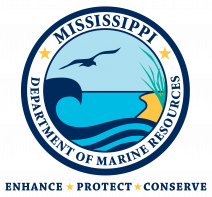IMPACT & APPLICATION TYPE FAQ
- Please contact Jennifer Stout
- (228) 523-4106
- jennifer.stout@dmr.ms.gov
FREQUENTLY ASKED QUESTIONS
What is the difference between the Condensed and Expanded application types?
- The Condensed application type should be used for projects with 5 or fewer separate impact types. The Expanded application type should be used for projects with more than 5 separate impact types.
Keep reading to fully understand how to determine how many impact types your project has.
What do you mean by impact?
- An impact is either:
- A structure you want to construct or place in, on, over, or under a wetland or water that does not change the basic character of that wetland or water. Examples include piers, boathouses, bulkheads, breakwaters, jetties, bridges, and utility lines.
- An action you want to perform within a wetland or water that may or may not change the basic character of the wetland or water. Examples include fill, dredging, riprap, debris removal, collection of plants, and derelict vessel removal.
What are the impact types listed on the application?
- Boat ramp
- Boathouse
- Breakwater
- Bridge
- Bulkhead
- Debris removal
- Derelict vessel removal
- Dredging
- Indented boat slip
- Intake/Outfall structure
- Jetty
- Pier
- Piling
- Plant material collection
- Riprap
- Utility line installation
- Wetland fill
What if I don’t see my impact type on your list?
- Ask yourself if the impact type you’re looking for can be broken down into other impact types that are included on the list. For example, you want to construct a living shoreline but don’t see that as an impact type you can choose. That’s because a living shoreline is typically a project made up of more than one impact type such as a breakwater to reduce wave energy and fill for marsh or reef creation.
- In the same way, a marina is made up of several impact types such as piers, breakwaters, dredging, bulkheads, etc.
How do I know how many impact types I have?
- If there is a unique aspect to portions of your impacts, then each unique portion should be counted as a separate impact type and – except for piers – multiple structures must be entered as separate impact types, even if they have the same dimensions.
- If you want to build multiple piers with identical dimensions, you may enter them as one impact type. You will be asked how many piers of those dimensions you want to build. Piers are the only impact type where you can enter multiples with the same dimensions as 1 Impact Type.
- Wetland fill in unique habitats should be entered as separate impact types. If you are proposing to fill a total of 6 acres of wetlands with 4 acres of pine savanna and 2 acres of bottomland hardwood, you have 2 impact types, not just 1.
EXAMPLES
PROJECT DESCRIPTION
- Access pier 25’ x 6’
- Pier 10’ x 5’
- Pier 10’ x 3’
- Boathouse 20’ x 16’
This project has 4 structures and 4 Impact Types. The piers must be entered as separate Impact Types since they have unique dimensions.
PROJECT DESCRIPTION
- Access pier 25’ x 6’
- Pier 10’ x 5’
- Pier 10’ x 5’
- Boathouse 20’ x 16’
This project has 4 structures but can be entered as 3 Impact Types since 2 of the piers have identical dimensions.
PROJECT DESCRIPTION
- Access pier 25’ x 6’
- Pier 10’ x 5’
- Pier 10’ x 5’
- Boathouse 20’ x 16’
- Boathouse 20’ x 16’
This project has 5 structures but can be entered as 4 Impact Types since 2 of the piers have identical dimensions. Boathouses must always be entered separately, even if they have identical dimensions.
PROJECT DESCRIPTION
- 6 acres of fill
- 2 separate areas of pine savanna; 4 acres and 2 acres
This project has 1 Impact Type since the habitat is the same for both areas of fill, even though they are physically separate
PROJECT DESCRIPTION
- 6 acres of fill
- 2 acres of bottomland hardwood
- 4 acres of pine savanna
This project has 2 Impact Types since there are 2 different habitat types.
PROJECT DESCRIPTION
- 6 acres of fill
- 1 acre of bottomland hardwood
- 4 acres of pine savanna
- 1 acre of scrub/shrub
This project has 3 Impact Types since there are 3 different habitat types.


